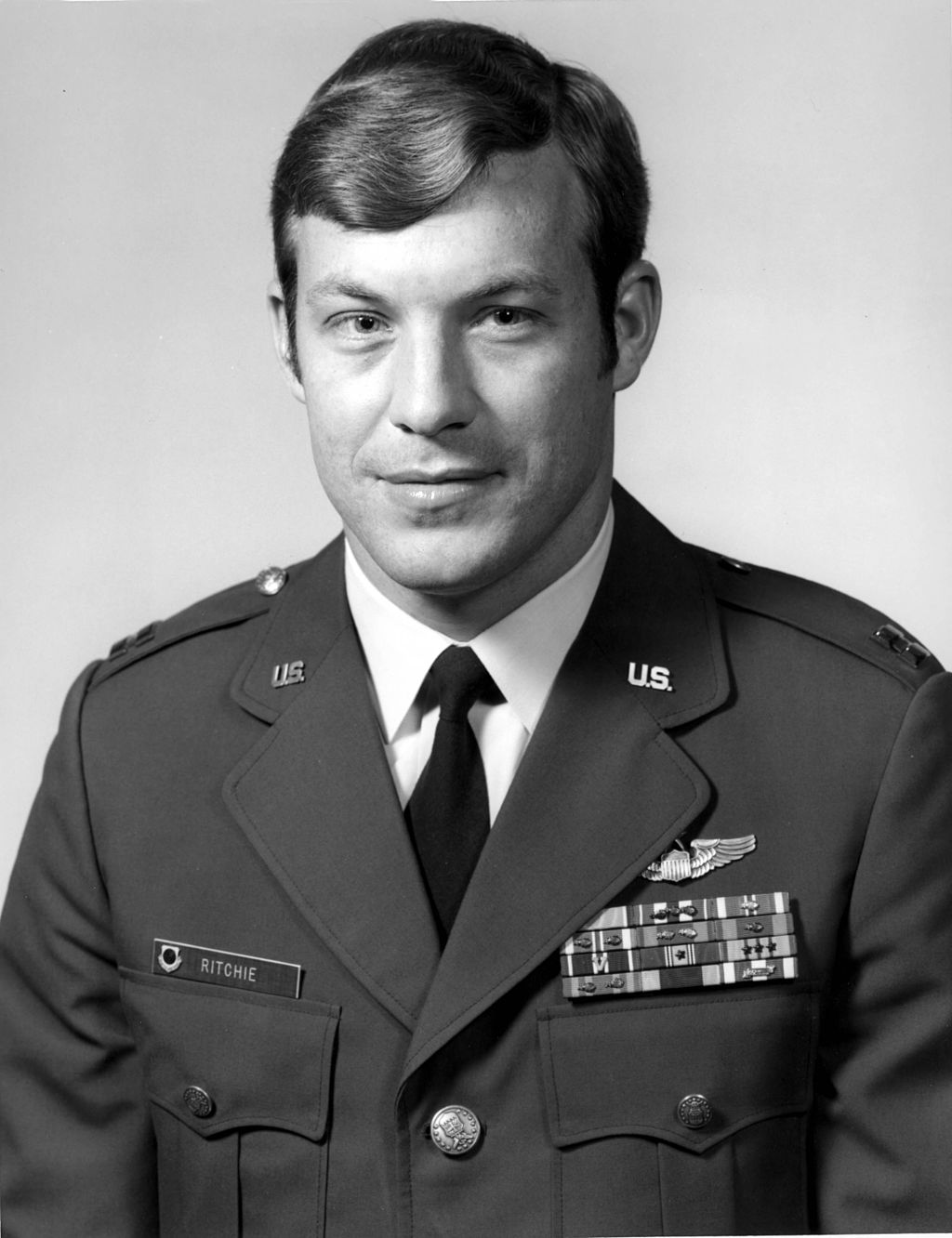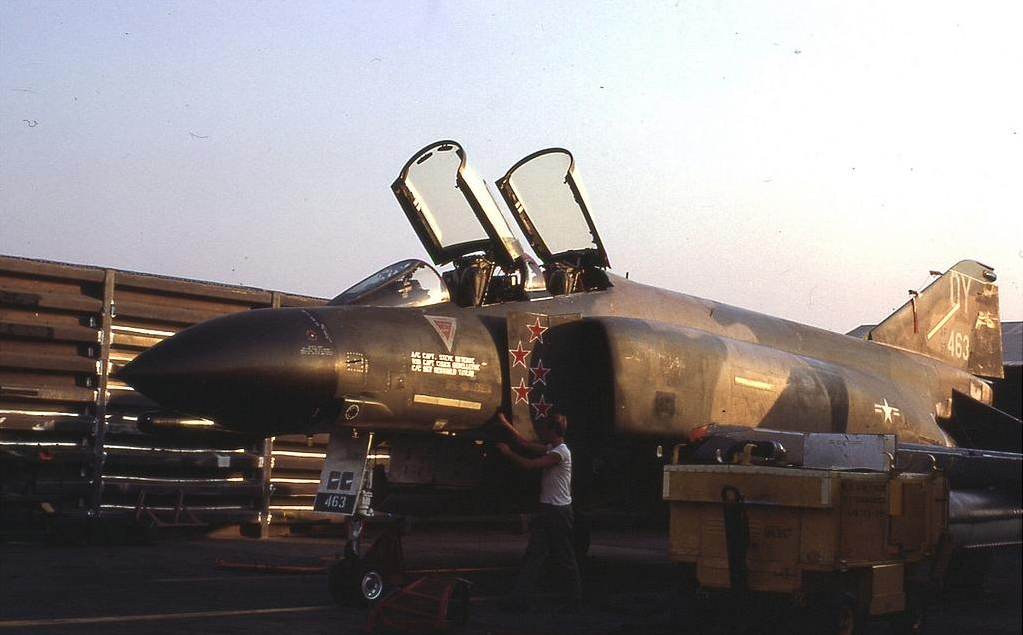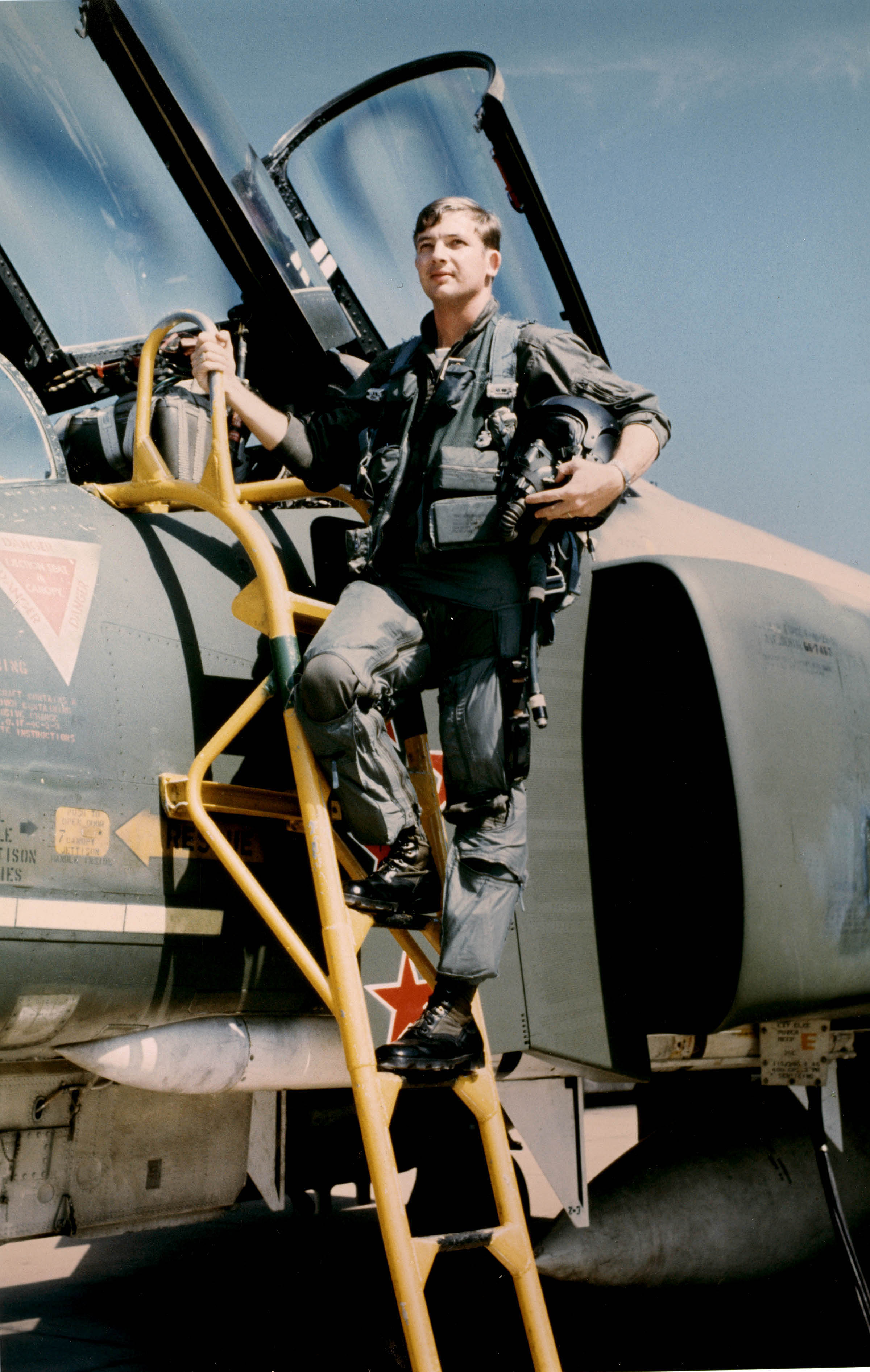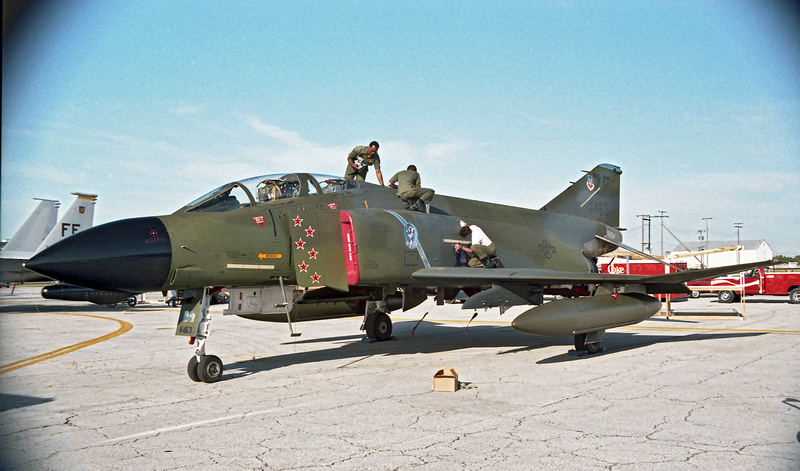
28 August 1972: Captain Richard Stephen Ritchie, United States Air Force, and Weapons System Officer Captain Charles Barbin DeBellevue, leading Buick flight with their McDonnell F-4D Phantom II, shot down a North Vietnamese MiG 21 interceptor. This was Ritchie’s fifth confirmed aerial combat victory, earning him the title of “ace.” [Chuck DeBellevue would later be credited with six kills.]
An official U.S. Air Force history reads:
. . . Ritchie flew the lead aircraft of a MiGCAP flight, with Capt. Charles B. DeBellevue as his WSO, during a Linebacker strike mission. “We acquired a radar lock-on on a MiG 21 that was head-on to us,” Ritchie said.
“We converted to the stern and fired two AIM-7 missiles during the conversion. These missiles were out of parameters and were fired in an attempt to get the MiG to start a turn. As we rolled out behind the MiG, we fired the two remaining AIM-7s. The third missile missed, but the fourth impacted the MiG. The MiG was seen to explode and start tumbling toward the earth. The kill was witnessed by Captain John Madden, aircraft commander in number 3.

“It was an entirely different situation,” Ritchie noted to newsmen. The MiG flew at “a much higher altitude than any of my other MiG kills and at a much greater range. I don’t think the MiG pilot ever really saw us. All he saw were those missiles coming at him and that’s what helped us finally get him.”
The new ace complimented the ground crews who kept the F-4s combat ready: “There’s no way could have done it without them,” he said. In fact, I got my first and fifth MiG in the same plane. Crew Chief Sergeant Reggie Taylor was the first one up the ladder when the plane landed and you just couldn’t believe how happy he was. I think he was more excited than I.”
DeBellevue, whose total victories rose to four with this day’s kill, commented on the teamwork: “The most important thing is for the crew to work well together,” he said. “They have to know each other. I know what Steve is thinking on a mission and can almost accomplish whatever he wants before he asks. I was telling him everything had to know when he wanted it, and did not waste time giving him useless data.”
— Aces and Aerial Victories: The United States Air Force in Southeast Asia 1965–1973, by R. Frank Futrell, William H. Greenhalgh, Carl Grubb, Gerard E. Hasselwander, Robert F. Jakob and Charles A. Ravenstein, Office of Air Force History, Headquarters USAF, 1976, Chapter III at Page 103.

Flown by five different crews, F-4D 66-7463 shot down six enemy fighters from 1 March to 15 October 1972. It is now on display at the United States Air Force Academy, Colorado Springs, Colorado.


© 2016, Bryan R. Swopes